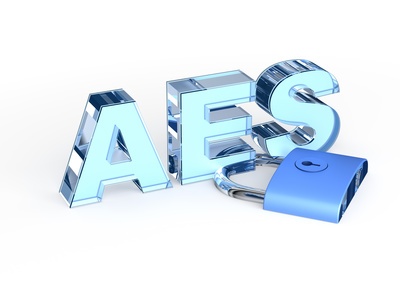The International Trade Blog Export Compliance
The Language of AES
On: May 3, 2017 | By:  Lisa Nemer |
4 min. read
Lisa Nemer |
4 min. read
 Sometimes it seems hard to comply with the U.S. Foreign Trade Regulations (FTR) because the language used to describe the rules is confusing. For example, do you know the definitions of filing citations, exemption legends and exclusion legends? The terms are similar, bulky and don’t really do a good job of describing what they mean, but one of them must be clearly stated on your commercial loading document so that U.S. Customs and Border Protection (CBP) does not detain your goods at the port and/or issue a penalty.
Sometimes it seems hard to comply with the U.S. Foreign Trade Regulations (FTR) because the language used to describe the rules is confusing. For example, do you know the definitions of filing citations, exemption legends and exclusion legends? The terms are similar, bulky and don’t really do a good job of describing what they mean, but one of them must be clearly stated on your commercial loading document so that U.S. Customs and Border Protection (CBP) does not detain your goods at the port and/or issue a penalty.
Of course, to begin to understand filing citations, exemption legends, and exclusion legends you must first be aware of AES, EEI and ITNs. So, let’s break it down.
AES, EEI and ITNs
If you are an exporter, you should be aware of the Automated Export System (AES), which is used to file your Electronic Export Information (EEI). The rules for how to file your EEI are outlined in the FTR. The EEI includes data about your shipment including what you are shipping and who you are shipping it to.
The U.S. Census Bureau uses the EEI to calculate U.S. trade statistics and other economic indicators. Customs and Border Protection (CBP) also uses the EEI to ensure compliance with U.S. export regulations. You login to AESDirect to file your EEI, which is accessed through CBP’s Automated Commercial Environment (ACE) Portal. When your EEI has been accepted by AESDirect, you receive an Internal Transaction Number (ITN) as proof that you filed your EEI with AES.
Filing Citations
A filing citation is a notation on your commercial loading documentation showing that you filed your EEI with AES. There are three acceptable filing citations.
Proof of Filing Citation
This is your ITN number. It should be preceded on your paperwork by AES ITN. For example: AES X20100101987654.
Post-Departure Citation
If your company is allowed to file after your goods have left the port, the filing citation would start AESPOST followed by the USPPI ID, the Filer ID and the Date of Export. For example: AESPOST 12345678912 01/01/2010.
If you rely on an authorized agent like a freight forwarder to do your EEI filing, the filing citation must include the filer's ID after the USPPI's ID. For example: AESPOST 12345678912 - 987654321 01/01/2010.
Most companies are not allowed to file post departure, and even if you have that right, you still need to file within five days of departure.
AES Downtime Citation
This can only be used when AESDirect is unavailable, and in that case all users will be notified via an AES broadcast email. You can still ship during this time unless your goods are controlled by the International Traffic in Arms Regulations (ITAR). Note on your commercial loading document AESDOWN followed by the Filer ID and the Date of Export. For example: AESDOWN 123456789 01/01/2010.
The EEI must be filed as soon as AESDirect becomes available.
Exemption Legends
An exemption legend is a notation on your commercial loading documentation that explains why you didn’t file your EEI with AESDirect. Exemption legends are used for items that are controlled under the FTR but are exempt from AES filing for a particular shipment and for a specific reason. The acceptable exemption legends are in FTR sections 30.36 through 30.40. Below are some of the most common exemption legends.
- Exemption for shipments destined for Canada that don’t require an export license should be noted as NOEEI 30.36.
- Exemption for shipments that are valued at $2,500 or less by Schedule B code should be noted as NOEEI 30.37(a).
- Exemption for shipments that were imported into the U.S. under a temporary import bond and are being exported back to their original country should be noted as NOEEI 30.37(r).
- Exemption for shipments are being exported as tools of the trade and will be returned to the U.S. should be noted as NOEEI 30.37(b).
- Exemption for shipments to U.S. Armed Services should be noted as NOEEI 30.39.
Exclusion Legends
An exclusion legend is a notation on your commercial loading documentation that explains why you didn’t file your EEI with AESDirect. Exclusion legends are used for items that are outside the control of the FTR and are excluded from filing requirements as identified in Section 30.2(d) of the FTR. Even if the shipment is excluded from AES filing, the exclusion legend must be displayed on the commercial loading document or in a prominent location on the shipment package.
Examples of exclusion legends include:
- Good shipped between the U.S. and U.S. territories, except Puerto Rico and the U.S. Virgin Islands, should be noted as NOEEI 30.2(d)(2).
- Electronic transmissions and intangible transfers should be noted as NOEEI 30.2(d)(3).
- Goods destined for international waters where the entity assuming control of the goods is the U.S. should be noted as NOEEI 30.2(d)(5).
Commercial Loading Documents in Shipping Solutions
In Shipping Solutions export documentation and compliance software, you can file your EEI with AESDirect and receive your ITN number. Enter your ITN number or the appropriate filing citation, exemption legend, or exclusion legend on the EZ Start-EEI screen in the box labeled AES ITN Code or Exemption Statement. The citation or legend will then print on the appropriate documents.
In Shipping Solutions, some of the exemption legends are pre-loaded in the Phrases screen on the Databases tab. You can add other exemption legends as well as exclusion legends yourself. Then select the appropriate exemption or exclusion legend from the drop-down list on the EZ Start-EEI screen to get the statement on your documents.
Which documents are considered commercial loading documents? If you use Shipping Solutions software, the citations and legends will appear on the air waybill, ocean bill of lading, inland bill of lading, and all versions of the shipper’s letter of instruction.
Like what you read? Subscribe today to the International Trade Blog to get the latest news and tips for exporters and importers delivered to your inbox.

About the Author: Lisa Nemer
Lisa Nemer leads the customer service and finance teams at Shipping Solutions, a software company that develops and sells export document and compliance software targeted specifically at small and mid-sized U.S. companies that export. If you have ever called Shipping Solutions with a question or problem you've probably talked to Lisa! Prior to joining Shipping Solutions, Lisa spent 14 years in finance and technology-related jobs for a Fortune 500 company in Minneapolis.



